2,000-year-old ‘fascinating, elegant’ depictions of Zeus and Aphrodite unearthed during arcaheological excavations at Aspendos Ancient City
2 statues from Roman Empire period found in Türkiye’s ancient Aspendos Theatre
The Turkish culture and tourism minister said on Monday that two “magnificent” statues from the Roman Imperial Period were discovered in Türkiye’s ancient Aspendos Theatre.
“We are working to leave a legacy to the future,” Mehmet Nuri Ersoy said on X.

“During the excavations carried out as part of our Heritage to the Future Project in the Ancient City of Aspendos, two magnificent statues from the Roman Imperial Period were discovered,” he stated.

“Fascinating, elegant 2,000-year-old depictions of Zeus and Aphrodite were unearthed during excavations carried out in the Two-Storey Shops-Stoa Complex,” the official stressed.
“I hope that the works and structures we will reveal will be beneficial to the cultural and tourism life of our country,” he added.
Where Is Aspendos Located?
Aspendos is located in the Mediterranean region and is within the boundaries of the very popular city of Antalya.
Antalya is a remarkable city with its unique historical buildings, climate, and nature. Aspendos Ancient City, one of the most popular structures of Antalya, welcomes thousands of tourists every year.
Aspendos is situated 10 km from the center of Serik and 47 km away from the city center of Antalya. Aspendos, which has become the symbol of the city, ranks first among the must-see places in Antalya
The ancient city of Aspendos is located in Southern Turkey, in the ancient Pamphylia region by the Eurymedon (Köprüçay) river. The acropolis lies about 60 m. above sea level and sits on a flat-topped hill with many surviving monuments including the Nymphaeum, Basilica, Market Building and Odeion.
History of Aspendos
The Eurymedon used to be a navigable river and gave access to the city. This was the main reason for the city‟s prosperity. Both the archaeological remains and the historical sources confirm that Aspendos had entered upon the stage of ancient world events by the 5th century BC with the arrival of the Persians to Pamphylia and that it continued to retain its importance until, and after, Alexander‟s control of Asia Minor.
The earlier archaeology is currently being investigated, and recent findings carried the history of the city back even further. Recent surveys and excavations brought up material cultures from the Early Iron Age. The monumental buildings are mainly from the Hellenistic and Roman Period. Currently, it is known that there was continuous settlement right through to the Byzantine and Seljuk periods.
The site is visited by approximately 400.000 people every year, mainly because of its magnificent Roman theatre. “This is not like anything that I ever saw before.” This is how the British archaeologist David George Hogarth had described the Aspendos Theatre in 1909 in a paragraph which continues as follows: “You may have seen the amphitheatres in Italy, France, Dalmatia and Africa; temples in Egypt and Greece; the palaces in Crete; you may be sated with antiquity or scornful of it. But you have not seen the theatre of Aspendos.”
This description is still valid today, because the site of Aspendos houses the best preserved ancient theatre of the world. In addition, this richly decorated monument bears the traces of different historic periods including the Roman and the Seljuk periods. It was initially built during the reign of the Roman emperor Marcus Aurelius, between 160-180 A.D. The inscription on the western entrance wall records that the architect was Zenon, son of Theodorus and it was the gift of two rich brothers; A.Curtius Crispinus Arruntianus and A.Curtius Crispinus.
Like most theatres in Asia Minor, the majority of the cavea or spectator tribune is dug out of the eastern slope of the acropolis whereas the rest is supported by artificial subtractions, a stone-built arch and vault system.
The monument is among the biggest of its kind, with a façade of approximately 100 meters wide and 22 meters high. What makes it unique is the impressive level of preservation and the richness of its architectural decorations. The new investigations have revealed that the capacity of the theatre was 7300-7600 people (45cm seating width per person). This number could be up to 8500 people, if stairs had been used as seat places in crowded performances in Ancient Times. The cavea is divided in two parts by a horizontal passage called the diazoma. The lower section contains 20 rows of seat, while the upper one has 21 rows. The main entrances to the lower cavea are through two vaulted parodoi, linking the stage building to the cavea. The actual scaenae frons or stage is flanked by two towers, providing access to the seating rows situated higher up in the auditorium. In addition, a system of gates in the exterior wall of the cavea provided additional options to access the cavea. Unique also is the covered gallery raised above the whole perimeter of the cavea, offering shelter from the elements to those who wished to take a brake from the spectacles. Although partially reconstructed, it is the best preserved example in Asia Minor and beyond.
The two-storied stage building, which is adorned with exquisite architectural ornamentation, still stands to its full height. The stage was accessed through five doors. The central gate is the largest one and is flanked by two doors of decreasing dimensions on either side. Projecting socles, separating the doors from one another, are still preserved. The formed the basis for the two-storied aediculated façade that formed the background of the actual stage for the actors, which is no longer preserved and was probably dismantled when the function of the building changed in post antique times. The façade itself was magnificently decorated and composed of highly decorated entablatures supported by monolithic columns. The friezes of the lower storey were decorated with garlands hung from bucrania, whereas a tendril frieze decorated those of the upper storey. They supported equally richly carved cornices, which were in their turn crowned by differently shaped pediments. In the middle over the central gate, the façade culminated in a large-scale relief. Although the fronts of the protruding elements of the façade are no longer there, the remaining elements still provide an excellent idea of the original monumental façade. The monument is also of extreme importance for understanding the use of acoustics in ancient theatres. The stage building of Aspendos Theatre was probably covered by a wooden roof, which has not survived. Seljuk restoration in the 13th century and the reuse of the monument as a palace for a short period during the time of Sultan Alaeddin Keykubat aided the preservation of this magnificent structure. The zigzag paintings in red, which are still visible today on many surfaces of the internal and external façade, are dated to this period. Additionally, some of the windows on the inner part of the stage building were converted into gates to provide access to the southern part of the structure from the north tower.
Although mainly known for its theatre by the general public and visitors, Aspendos‟ aqueducts, with their two unique siphons, have been a source of extreme fascination for researchers. The aqueducts brought water to the city from the mountains 15 km to the north. The water, which was carried by the arcades, and at some points by the underground pipe drains, was vital not only for Aspendos but for the whole of the Pamphylian plain. It was thanks to this water that the city and its rural surroundings were fertile and rich in grain. The water was brought to the city centre by means of this aqueduct from two sources, namely Gökçeler and Pınarbaşı at about 500 m above sea level and 19 km away. Bean suggests, after study of an epigraphic source, that the Aspendos‟ aqueducts were erected by Tiberius Claudius Italicus at a cost of 2 million Denarii in the second century AD. The inverted siphons of the aqueduct, which are approximately 30 m high, made it possible to cross the 1.7km wide valley between the mountains to the north and the acropolis. The inner dimensions of the water channels were 55-60 cm wide and 90 cm high. The water channels of the siphons are of stone. The siphons rise at an angle of 55 degrees and the 924 m distance between them is traversed by arches that are 5.5 m wide space. The arches are 15 m high in the deepest point of the valley.
This structure, with these measurements and in its current condition, is one of the highest Roman constructions. Aspendos‟ aqueducts are similar to two structures, which are already on the UNESCO World Heritage List: the Pont du Gard aqueducts, which are higher than the one in Aspendos with a height of 48.77 meters; and the aqueducts of Segovia in Spain, which are 28.5 meters.
However none of these structures contain the siphons, which are extremely well preserved at Aspendos. Similar siphons can be found in Lyon (Mont d‟Or, Brévenne and Gier), however these do not provide any insight into their building technique or the use of these structures. The siphons in Aspendos allow researchers to make further discoveries on how it might have functioned. Moreover, the length of the still standing aqueducts of Aspendos is more than the ones in Segovia and Pont du Gard.
Justification of Outstanding Universal Value
The Aspendos theatre is the best-preserved monument of its type from the Ancient World in Turkey, and one of the most intact in the world. The theatre of Aspendos is one of the rare examples of a Roman theatre, constructed as a whole with the combination of a multi-storied and richly decorated stage building and a semi circular shaped cavea. The level of preservation was mostly due to the Seljuk restoration of the 13th century, during the time of Sultan Alaeddin Keykubat. The restoration and reuse of the building as a palace have left important but subtle traces including geometric designs and blue-coloured tiles. Therefore the theatre not only gives the spectator endless inspiration to delve into the history, but also presents an opportunity to read the multi-layered architectural interventions in a critical manner; thus the monument invites the contemporary visitor or expert to become actively engaged in picturing the theatre‟s use and critically questioning it based on the existing evidence.
The aqueducts, on the other hand, have come even more to the attention of scholars because of their unique hydraulic siphons and very well preserved original conditions. They are important structures for the history of technology since they still survive in such a condition that raises and answers many questions regarding their construction and use. The level of preservation gives the spectator a sense of the monument's "eternal" nature when viewed from the high and rather isolated point on the northern side of the flat-topped acropolis.
Criterion (i): Both the theatre and aqueducts of Aspendos are the products of an advanced thinking and imagination with the highest quality of workmanship and technological input. Both monuments present a platform for modern scholars to grasp ancient populations and their thinking through studying such well- preserved masterpieces.
Criterion (ii): The aqueducts of Aspendos shed light on the technological advancements of the era while the theatre provides an opportunity to see the architectural interventions of a 13th century civilization that was not part of the existing local culture. Indeed, the Seljuk‟s meticulous effort to use and adorn the monument shows that they too must have found this monument especially amazing. Aspendos offers a unique case in the sense that the city continued to be an important center during the late classical period, had an important place in the Christian world and was overtaken by new comers. Unlike many other monuments in different ancient cities, the theatre survived very well and was even embellished with more stories by its new owners.
Criterion (iv): The theatre of Aspendos could be taken for its monumentality and astonishing preservation alone, though one of the most distinctive features of it is the fact that the monument offers an opportunity to study different historical phases.
The use of the theatre as the Seljuk palace in the 13th century makes it a unique case. Owing its amazing preservation level to this rather unconventional use, the theatre can shed light on different historical layers. The spolia material that can be spotted on the window frames (i.e. animal figured stones) may reveal Achamenid traces, while the use of tiles (some of which are on display in Antalya Museum) and the presence of Seljuk designs on the stage building give even more historical depth to the monument.
Statements of authenticity and/or integrity
The site and its surrounding is protected by the Turkish Legislation for Preservation of Cultural and Natural Property, Law No.: 2863 amended, as the 1st degree archaeological and the 3rd degree natural site since 08.09.1994.
Comparison with other similar properties
The first example of a similar Roman theatre, constructed as a whole with the combination of a multi- storied and richly decorated stage building and a semi circular shaped cavea, is the Pompeius theatre in Rome dated to 55 BC. This theatre has unfortunately not survived to the present day. However, there are two other theatres which were built with the same technique and are still standing. One of them is the Roman theatre in Orange, France, which is on the UNESCO World Heritage List and the second one is the Aspendos Theatre, which consists of more original building material compared to the former. Both being fascinating monuments, Aspendos theatre differ from them especially in its richly decorated façade as well as of differing multi-cultural historical layers. It gives a chance to the contemporary viewer to read these layers and mediate tolerance between cultures. The use of the theatre as the Seljuk palace in the 13th century makes it a unique case. Owing its amazing preservation level to this rather unconventional use, the theatre can shed light on different historical layers. Unlike many other monuments in different ancient cities, the theatre survived very well and was even embellished with more stories by its new owners.
Aspendos' aqueducts can be compared to the two structures which are already on the UNESCO World Heritage List: The Pont du Gard aqueducts and the aqueducts of Segovia in Spain. The length of the still standing aqueducts of Aspendos is more than the ones in Segovia and Pont du Gard and the siphons of the Aspendos aqueducts are higher than the Segovia aqueducts themselves.
Moreover, what makes the Aspendos Aqueducts unique is the presence of two very well preserved hydraulic siphons, which enable us to investigate their structural and technological achievements. This in turn helps us to gain a deeper understanding of the sophisticated physical elements of Roman Architecture. Neither Pont du Gard nor Segovia contains the siphons, which are extremely well preserved at Aspendos. Similar siphons can be found in Lyon (Mont d‟Or, Brévenne and Gier), however these do not provide any insight about their building technique or the use of these structures. The siphons in Aspendos allow researchers to make further discoveries on how it might have functioned.
One of the most interesting features of Aspendos‟ aqueducts is the great variety of material used in its construction including brick, squared stone and mortared rubble. Since brick is not a usual construction material in Asia Minor, the structure represents a clear break from the norm.

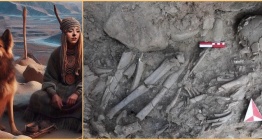
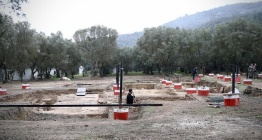


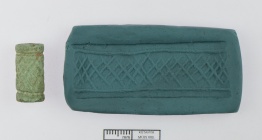

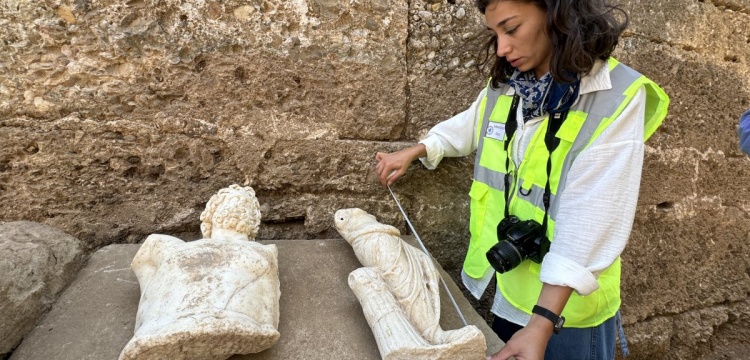
 Balıkesir Arkeoloji Buluşmaları 2024 Sempozyumu 12 Aralıkta başlıyor
Balıkesir Arkeoloji Buluşmaları 2024 Sempozyumu 12 Aralıkta başlıyor  2024 TÜBA Akademi Ödülleri açıklandı: Arkeolog Prof. Dr. R.R R. Smith de listede
2024 TÜBA Akademi Ödülleri açıklandı: Arkeolog Prof. Dr. R.R R. Smith de listede  Ankara'da Tarihi Kentler Birliği ve UNESCO Buluşması
Ankara'da Tarihi Kentler Birliği ve UNESCO Buluşması 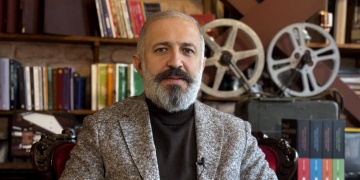 Koleksiyoner Bekir Cantemir: Sistem korumak üzerine kurulu, yaşatmaya değil
Koleksiyoner Bekir Cantemir: Sistem korumak üzerine kurulu, yaşatmaya değil 




